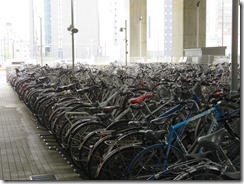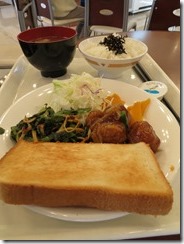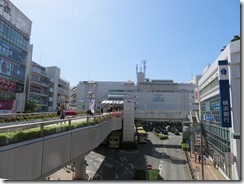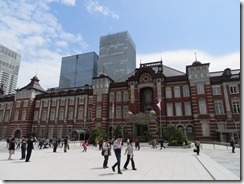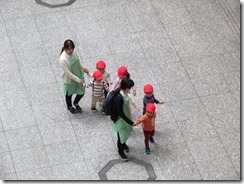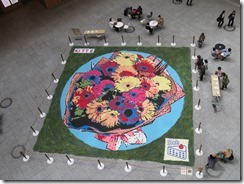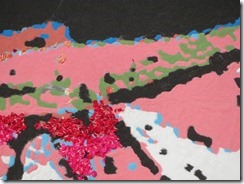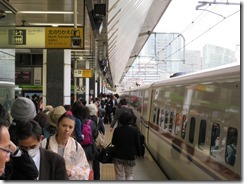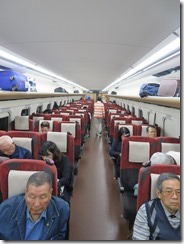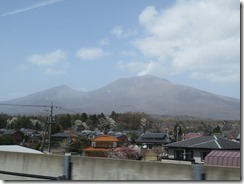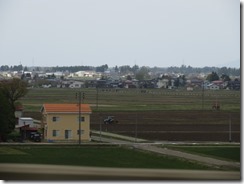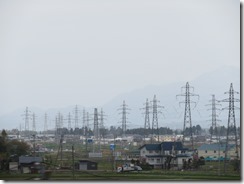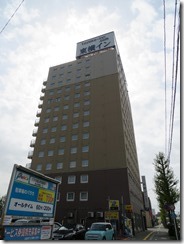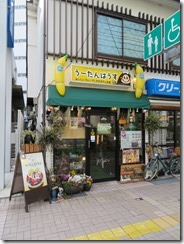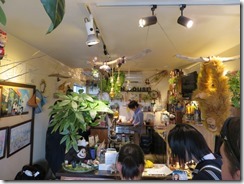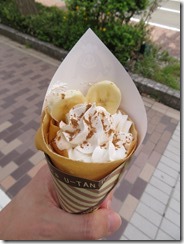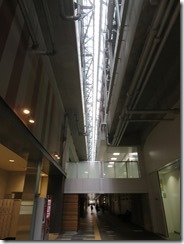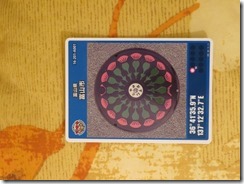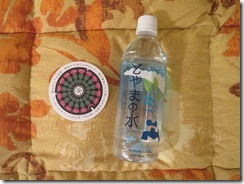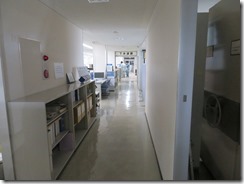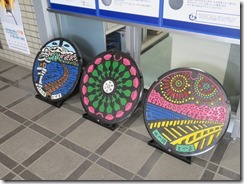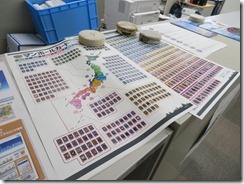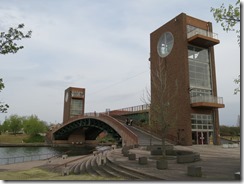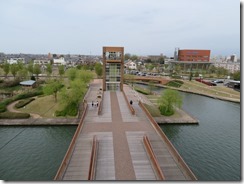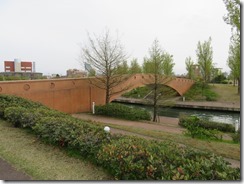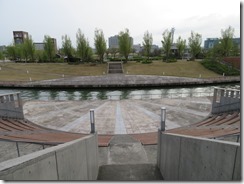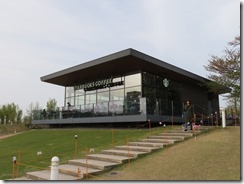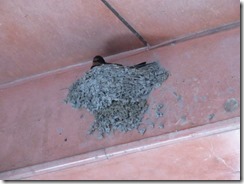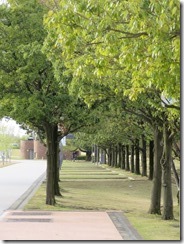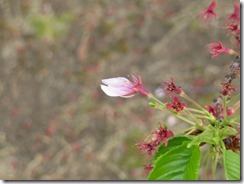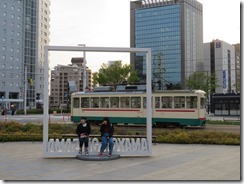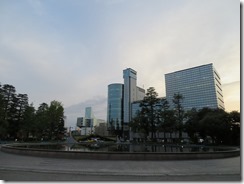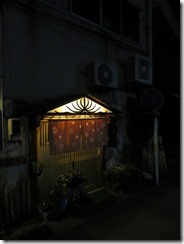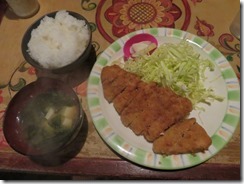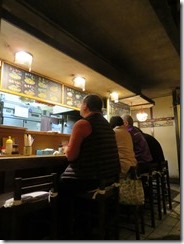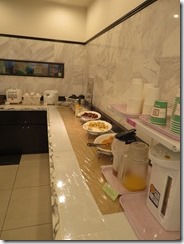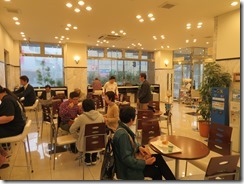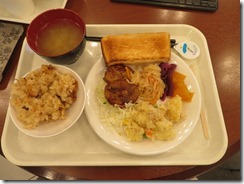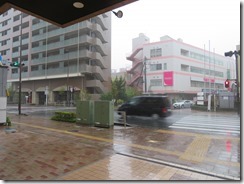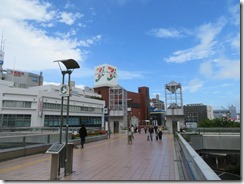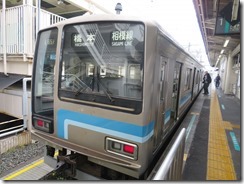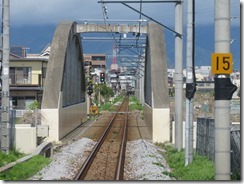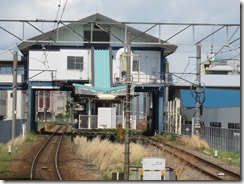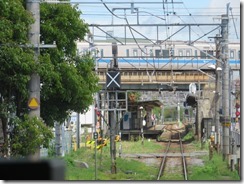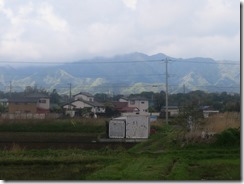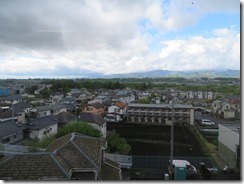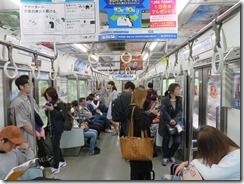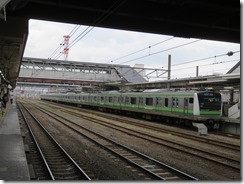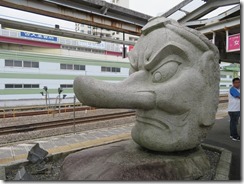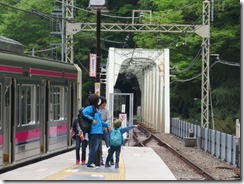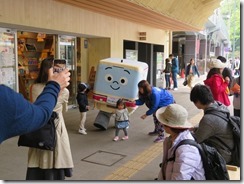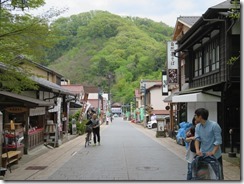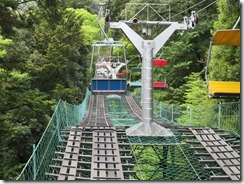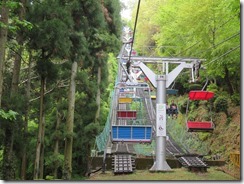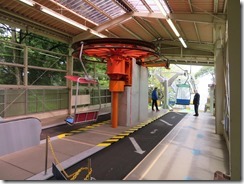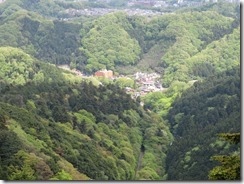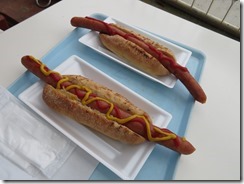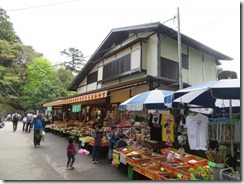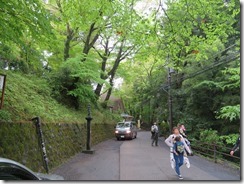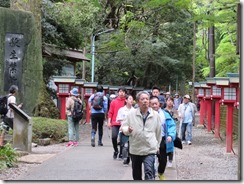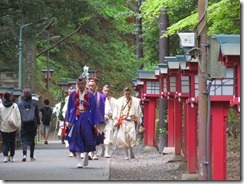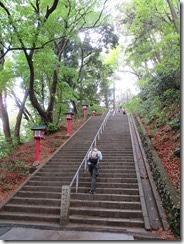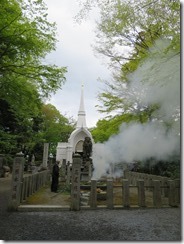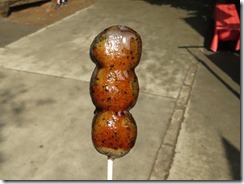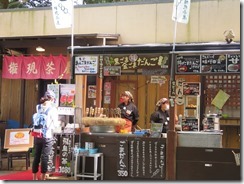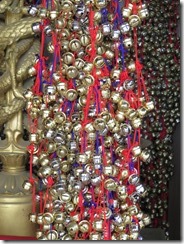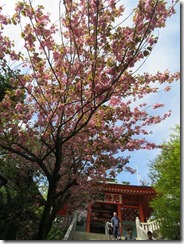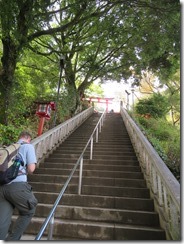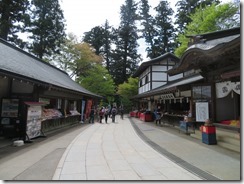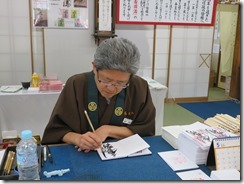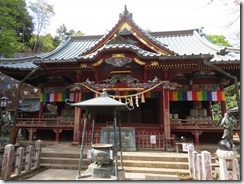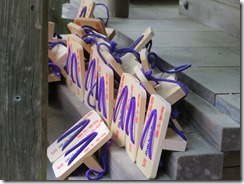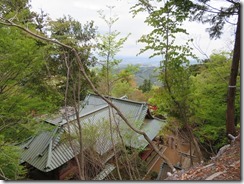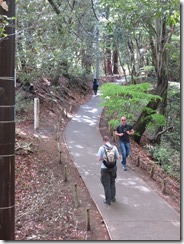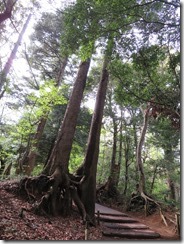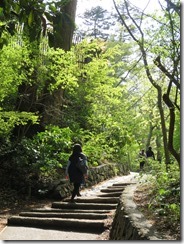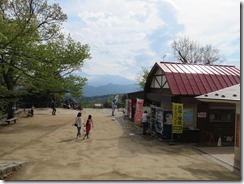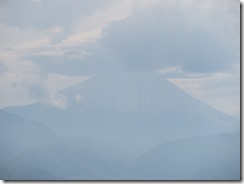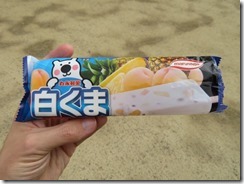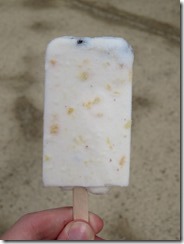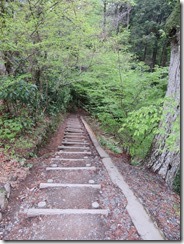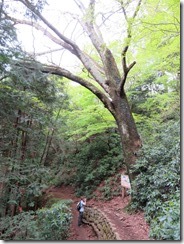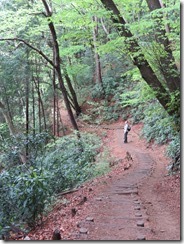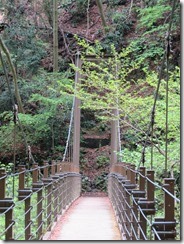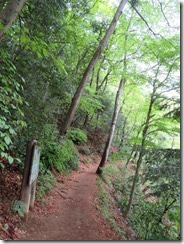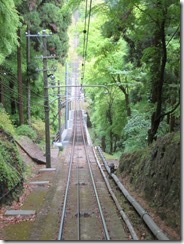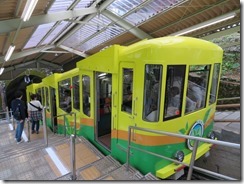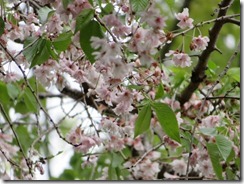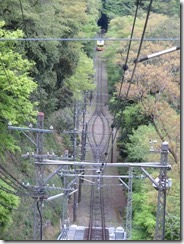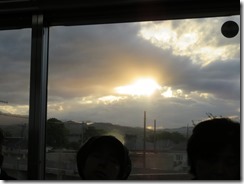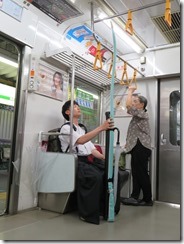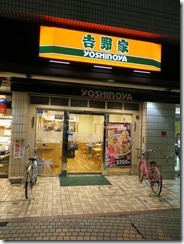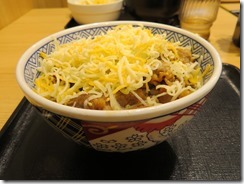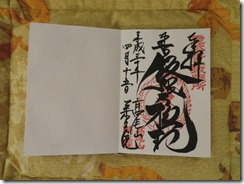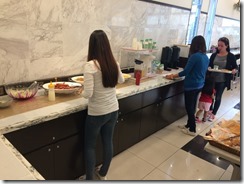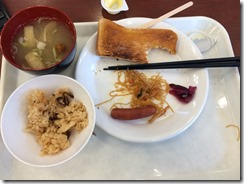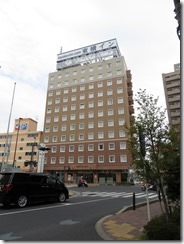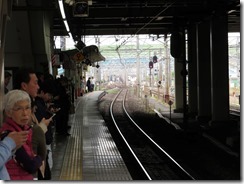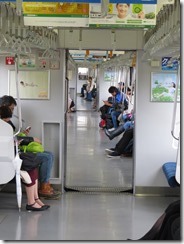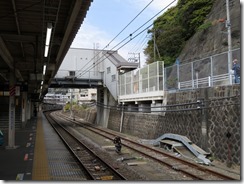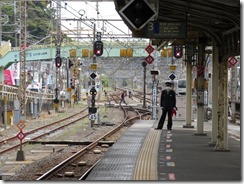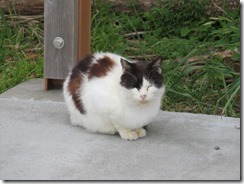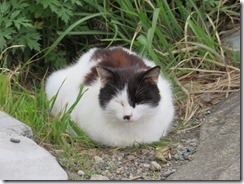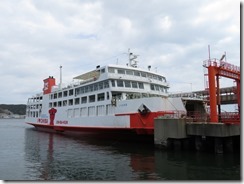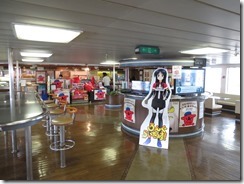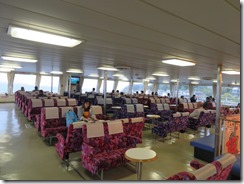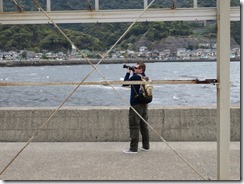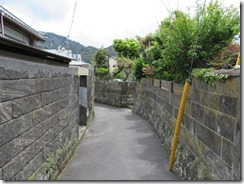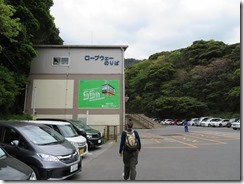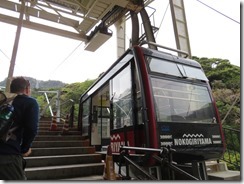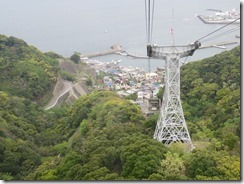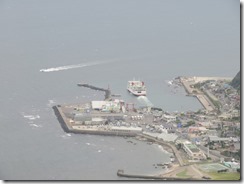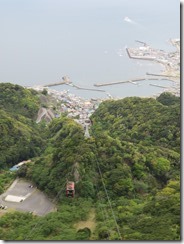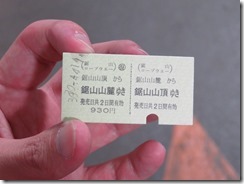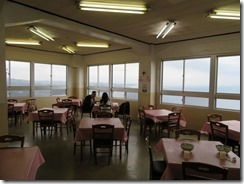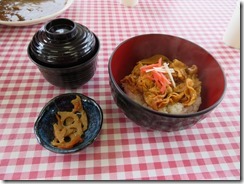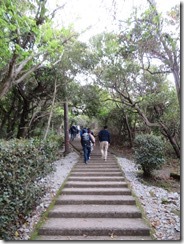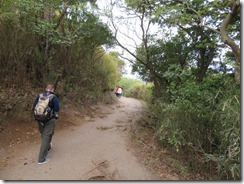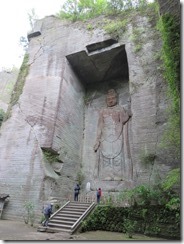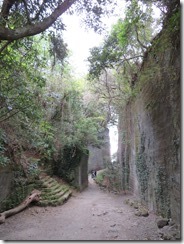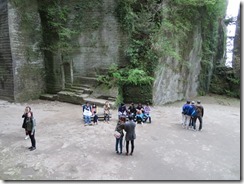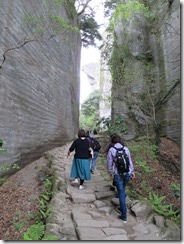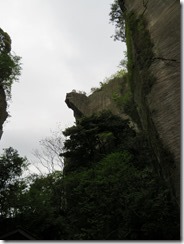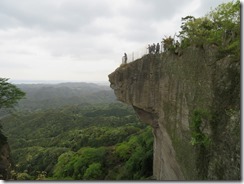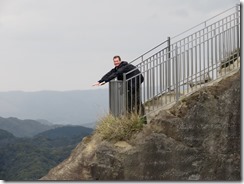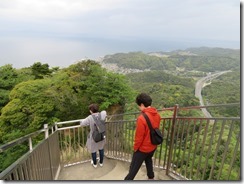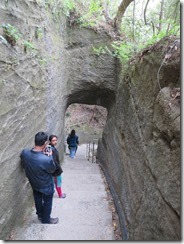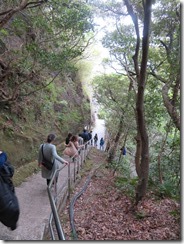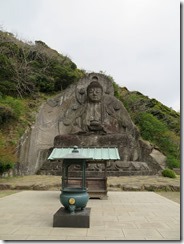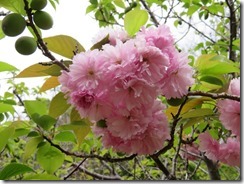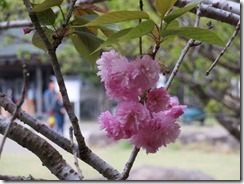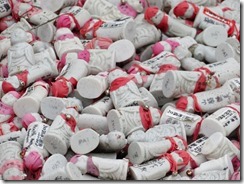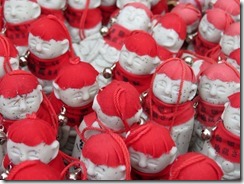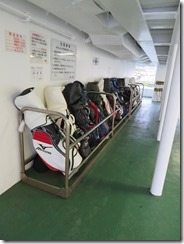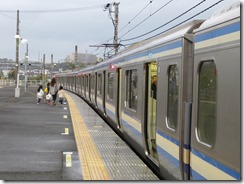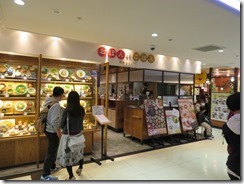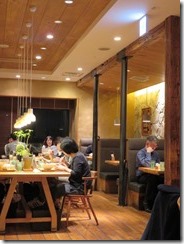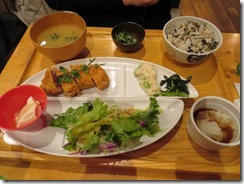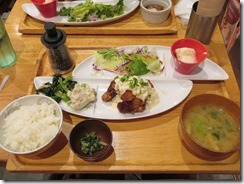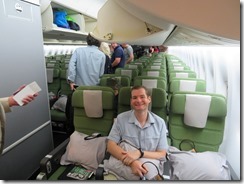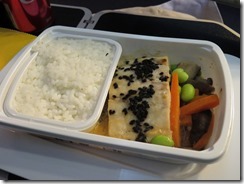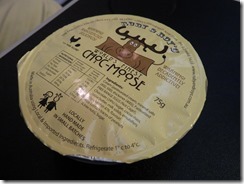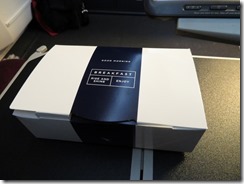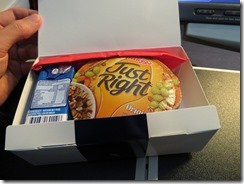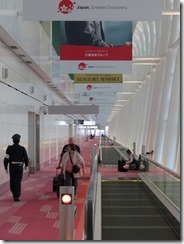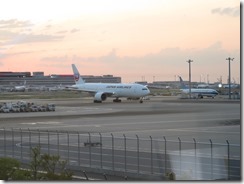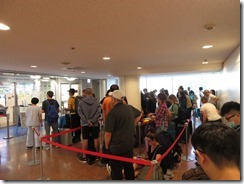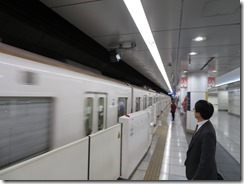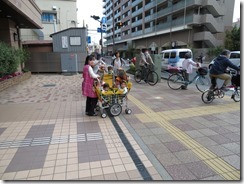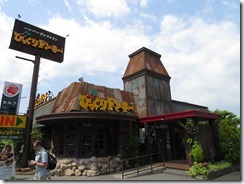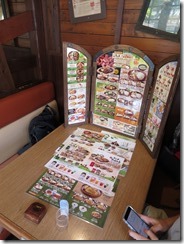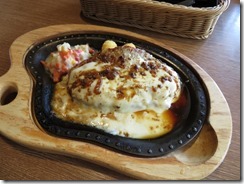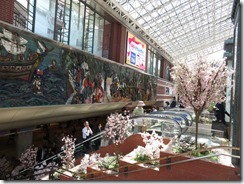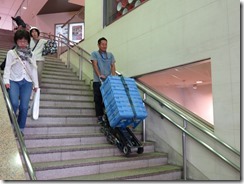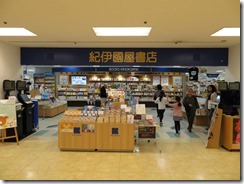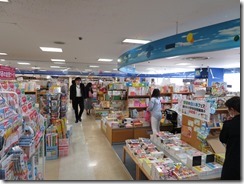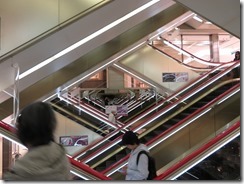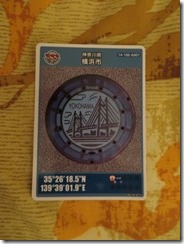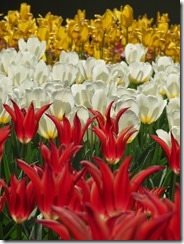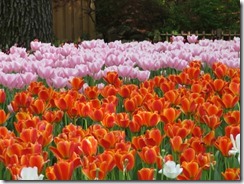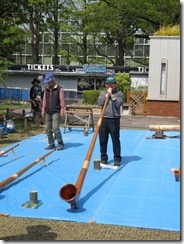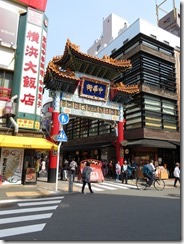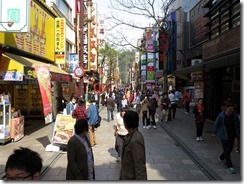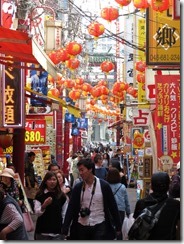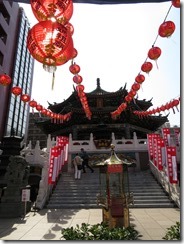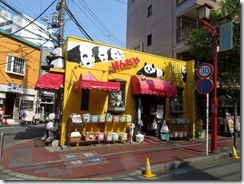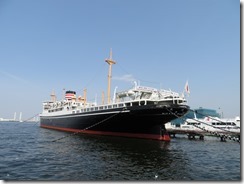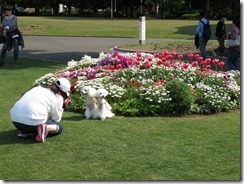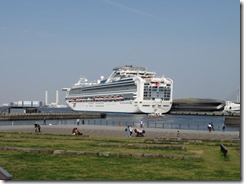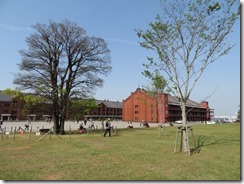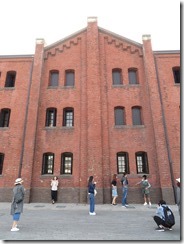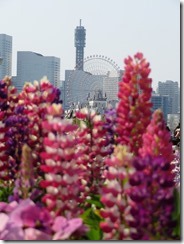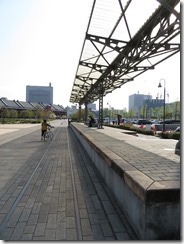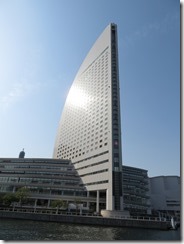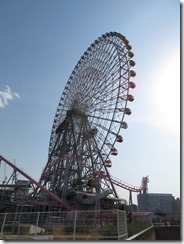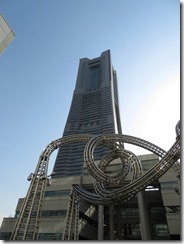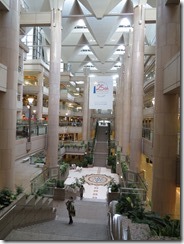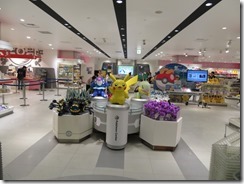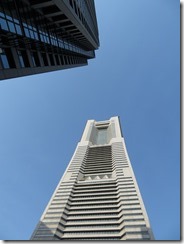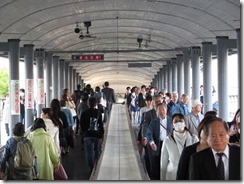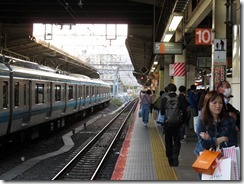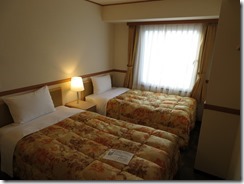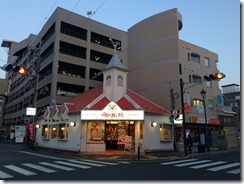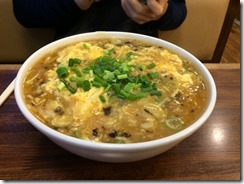It’s almost crazy just how much bicycle parking you find here. People ride bikes all over the place, and when you ride to work (or to the train station), you need somewhere secure to store it, and people are happy to provide it. Bicycle parking stations range from a bunch of racks, to fenced-in areas, to large rooms attached to underground walkways, all the way up to entire buildings literally the size of multi-floor car parking stations, entirely to house bicycles. And to think that one of the reasons I never really rode my bike to school was because there was nowhere at all at the other end to put it.
Today, after breakfast, we checked out of our hotel in Chigasaki and headed for our next destination. As an added bonus, today was actually sunny.
First, we headed into Tokyo for the first time this trip, taking the local Tokaido Line train the whole way. Then it was off to the shinkansen – the Hokuriku Shinkansen. It’s named after the Hokuriku region in Japan (literally the “northands” region, consisting of the coastline along the Sea of Japan, so we basically travelled across the country from south to north). The Hokuriku Shinkansen was originally opened in 1997, under the name “Nagano Shinkansen”, since it terminated in Nagano, but it was extended to Kanazawa in Ishikawa Prefecture almost exactly three years ago, in March 2015. They’re planning to extend it until it reaches Osaka, but that’s not predicted to reach completion until 2045.
In any case, the trains running on the Hokuriku Shinkansen are called Hakutaka (“white hawk”). Tragically, we were too late to get a seat on the train I was hoping to get, so we were given tickets for the next one an hour later. We took the time to have a bit of a poke outside Tokyo Station (since James’ last visit was back in 2010 when the building was still being refurbished). We also took the time to peek into a shopping centre across the road, which had a huge artwork in the middle of the floor made of coloured sand and flower petals and stems, celebrating the centre’s fifth anniversary.
After a while, we hopped on our train. As with all of our shinkansen rides so far, it was smooth and without issue, depositing us in Toyama, our next destination, after a few hours. When we hopped off the train, we discovered it was much colder than it was back in Chigasaki, so we scrambled for our jumpers.
To insert an expository paragraph here, Toyama is the capital and largest city in Toyama Prefecture, with a population of 420,000. It was established as a city (in the official, legal sense) on April 1st, 1889, as one of the first thirty cities in Japan, but the area has been a point of strategic importance since prehistoric times.
Unfortunately, getting the later train meant we were in for a late lunch, and there were no bento boxes available on the train – in hindsight, we should have bought some ekiben at Tokyo before we left, because after a brief stop at the hotel to deposit our luggage, we found that almost every food place was closed.
Eventually, we found a crepe shop which was also offering savoury crepes, so we decided to eat there, only to discover after queueing for a fair while that they were no longer being sold today. There was a whole pile of school girls in the shop, so it was clearly a popular place. Standing in line with the smell of crepes, however, had given me a craving for a crepe, so I bought a cinnamon-banana crepe, without stopping to think that’d mean James would still need to find lunch somewhere else.
James did eventually find somewhere else, a place selling kamameshi, a dish consisting of rice, meat and vegetables all cooked together in a small pot. I sat with him for a bit while we considered options – there were two places I vaguely had in mind for sightseeing, one on each side of the station, and with our reduced sightseeing time, we wouldn’t really have time for both. So we decided to divide our forces: I’d head north, to Kansui Park, while James would head south, to the Toyama Castle Gardens.
My reason for heading north was because Kansui Park is right next to the Toyama City Water and Sewage Bureau, from which I could obtain the Toyama Manhole Card. So I did. And he also gave me a coaster, and a bottle of “Toyama Water”. It was weird, though – in order to get the card, I had to actually go up to the third floor, and enter the actual Sewage Department offices, where all the clerks were sitting at desks working away.
But anyway, card acquired, I headed over to Kansui Park. Situated along the banks of the Fugen Canal, Kansui Park is a broad green space fairly dominated by the imposing Tenmon-kyo bridge – it’s a fairly standard flat beam bridge, except the pylons tower three storeys over the bridge, and the approach stairs on either side curve up and over like two unrelated arch bridges. Each pylon tower has a lift allowing you to easily get to an observation balcony at the top, so I went up for a look.
Kansui Park also contains an island in the middle, a Roman-style amphitheatre, and a Starbucks branch apparently renowned for being one of the more beautiful ones in Japan. I walked all around the park looking at things. There was even a promenade lined by cherry threes, but these were all leafy, the blossoms long gone. Sad face. Hopefully James will be able to blog about his trip to the castle at some point as well.
I wandered back to the station, and met up with James at another park near to where I bought my crepe to take part in a Pokémon Go raid battle with a whole crowd of men in suits, then we headed off to find a place for dinner, eating in a small place on a side street offering a bunch of battered and fried things – prawns, horse mackerel, scallops, even oysters when in-season. We both had tonkatsu, pork cutlet, but James had a mixed set that came with prawn as well. Everything comes with sides of miso soup and rice. Quite tasty.
We headed to our hotel to finish checking in and moved into our room. (We’re staying in Toyoko Inn again. There’s actually a second Toyoko Inn in the city, just over the road from the station – it’s brand new, literally, in the sense that it (sadly) doesn’t open until this upcoming Saturday.) And more to the point, get warmed up – it’s starting to get quite cold outside, about 9°C at the moment. Almost thinking of thermals tomorrow. Weather forecast is for cloud tomorrow, but rain tomorrow night continuing into Wednesday, which is not great…
Today’s photo count: three hundred and one.
Today’s pedometer count: 16,563 steps, for 12.1 km.
Today’s goshuin count: Nil
Today’s stamp count: Just one, Toyama Station.

